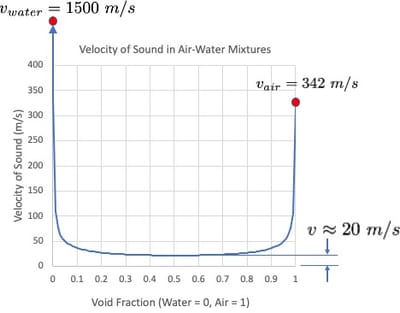SPEED OF SOUND IN TWO PHASE FLOWS
What is less well is what happens in two phase flows. The fluid dynamics is more complex and, if there are already vapor bubbles in the incoming flow, the shock speed is very much lower than either of the two components alone. With a 50% bubble volume in the incoming flow the shock speed of the mixture is ~20 m/s compared to the air value of 340 m/s and in water 1,500 m/s. Calculations of the speed of sound involve the densities of the components, their bulk moduli (E1,E2)

At present even much less is known about what is happening inside the bubbles when chemistry is involved especially if there are interactions at the interface with the surrounding fluid that in turn affects heat and mass transfer from the bubble vapor to the fluid..

At present even much less is known about what is happening inside the bubbles when chemistry is involved especially if there are interactions at the interface with the surrounding fluid that in turn affects heat and mass transfer from the bubble vapor to the fluid..



